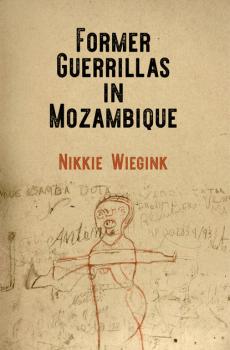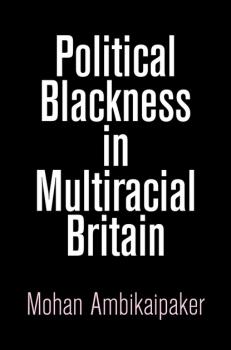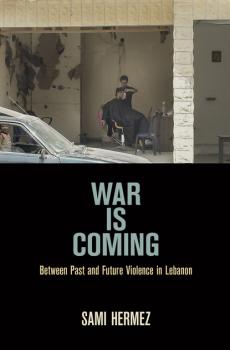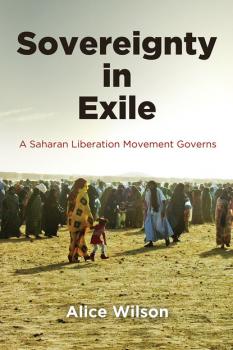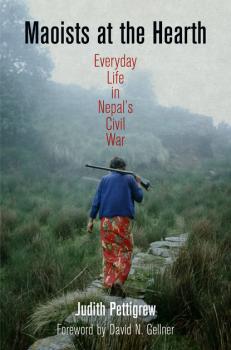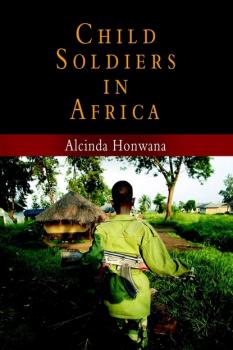ТОП просматриваемых книг сайта:
The Ethnography of Political Violence
Скачать книги из серии The Ethnography of Political ViolenceАннотация
A sensitive ethnography of former Mozambican National Resistance (RENAMO) combatants After sixteen years of civil war (1976—1992) between the Mozambican National Resistance (RENAMO) and the government of Mozambique, over 90,000 former combatants were disarmed and demobilized by a United Nations-led program. Former combatants were to find their ways as civilians again, assisted by community-based reintegration rituals. While the process was often presented as a success story of peace, renewed armed conflict involving RENAMO combatants in 2013 and onward suggests that the reintegration of former guerrillas was a far more complex story. In Former Guerrillas in Mozambique , Nikkie Wiegink describes the trajectories of former RENAMO combatants in Maringue, a rural district in central Mozambique. Rather than focus on violence, trauma, and the reacceptance of these ex-combatants by the community, Wiegink emphasizes the ways in which RENAMO veterans have navigated unstable and sometimes dangerous social and political environments during and after the war. She examines the experiences of both male and female war veterans and their attempts at securing a tolerable life. Based on fourteen months of fieldwork conducted long after the war ended, Former Guerrillas in Mozambique offers a critique of a notion of reintegration that assumes that the lives of former combatants are shaped first by a break with society when joining the armed group and later by a break with the past when demobilizing and a return to a status quo. Wiegink argues, instead, that former combatants' motivations, experiences, and interactions are not necessarily characterized by a rigid separation from their RENAMO past, but rather comprise a mixture of ruptures and continuities of relationships and networks, including families, the spiritual world, fellow former combatants, political parties, and the state.
Political Blackness in Multiracial Britain - Mohan Ambikaipaker
The Ethnography of Political ViolenceАннотация
One evening in 1980, a group of white friends, drinking at the Duke of Edinburgh pub on East Ham High Street, made a monstrous five-pound wager. The first person to kill a «Paki» would win the bet. Ali Akhtar Baig, a young Pakistani student who lived in the east London borough of Newham, was their chosen victim. Baig's murder was but one incident in a wave of antiblack racial attacks that were commonplace during the crisis of race relations in Britain in the 1970s and 1980s. Ali Akhtar Baig's death also catalyzed the formation of a grassroots antiracist organization, Newham Monitoring Project (NMP) that worked to transform the racist victimization of African, African Caribbean and South Asian communities into campaigns for racial justice and social change. In addition to providing a 24-hour hotline and casework services, NMP activists worked to mitigate the scourge of racial injustice that included daily racial harassment, hate crimes and antiblack police violence. Since the advent of the War on Terror, NMP widened its approach to support victims of the state's counterterror policies, which have contributed to an unfettered surge in Islamophobia. These realities, as well as the many layers of gendered racism in contemporary Britain come to life through intimate ethnographic storytelling. The reader gets to know a broad range of east Londoners and antiracist activists whose intersecting experiences present a multifaceted portrait of British racism. Mohan Ambikaipaker examines the life experiences of these individuals through a strong theoretical lens that combines critical race theory and postcolonial studies. Political Blackness in Multiracial Britain shows how the deep processes of everyday political whiteness shape the state's failure to provide effective remedies for ethnic, racial, and religious minorities who continue to face violence and institutional racism.
Аннотация
The last decade has been a transformative period in Kashmir, the hotly contested and densely militarized border territory located high in the Himalayan mountains between India and Pakistan. Suppressed and unheard, Kashmiri political aspirations were subordinated to larger geopolitical concerns—by opposing governments laying claim to Kashmir, by security experts promoting bilateral peace settlements in the region, and by academic researchers studying the conflict. But since 2008, Kashmiris who grew up in the midst of armed insurgency and counterinsurgency warfare have been deploying new strategies for challenging India's state and military apparatus and projecting their legal and political claims for freedom from Indian rule to global audiences. Resisting Occupation in Kashmir analyzes the social and legal logic of India's occupation of Kashmir in relation to colonialism, militarization, power, democracy, and sovereignty. It also traces how Kashmiri youth are drawing on the region's long history of armed rebellion against Indian domination to reimagine the freedom struggle in the twenty-first century. Resisting Occupation in Kashmir presents new ways of thinking and writing about Kashmir that cross conventional boundaries and point toward alternative ways of conceptualizing the past, present, and future of the region. The volume brings together junior and senior scholars from various disciplinary backgrounds who have conducted extensive fieldwork during the past decade in various regions of Kashmir. The contributors, many of whom were born and raised during the peak of the conflict in the 1990s, offer ethnographically grounded perspectives on contemporary social, legal, and political life in ways that demonstrate the multiplicity of experiences of Kashmiri communities. The essays highlight the ways in which this scholarly orientation—built through collaboration and dialogue across different kinds of borders—offers a new critical approach to Kashmir studies at this transformative and generative moment. Contributors : Mona Bhan, Haley Duschinski, Farrukh Faheem, Gowhar Fazili, Bruce Hoffman, Mohamad Junaid, Seema Kazi, Ershad Mahmud, Cynthia Mahmood, Saiba Varma, Ather Zia.
Аннотация
From 1975 to 1990, Lebanon experienced a long war involving various national and international actors. The peace agreement that followed and officially propelled the country into a «postwar» era did not address many of the root causes of war, nor did it hold main actors accountable. Instead, a politics of «no victor, no vanquished» was promoted, in which the political elite agreed simply to consign the war to the past. However, since then, Lebanon has found itself still entangled in various forms of political violence, from car bombings and assassinations to additional outbreaks of armed combat. In War Is Coming , Sami Hermez argues that the country's political leaders have enabled the continuation of violence and examines how people live between these periods of conflict. What do everyday conversations, practices, and experiences look like during these moments? How do people attempt to find a measure of certainty or stability in such times? Hermez's ethnographic study of everyday life in Lebanon between the volatile years of 2006 and 2009 tackles these questions and reveals how people engage in practices of recollecting past war while anticipating future turmoil. Hermez demonstrates just how social interactions and political relationships with the state unfold and critically engages our understanding of memory and violence, seeing in people's recollections living and spontaneous memories that refuse to forget the past. With an attention to the details of everyday life, War Is Coming shows how even a conversation over lunch, or among friends, may turn into a discussion about both past and future unrest. Shedding light on the impact of protracted conflict on people's everyday experiences and the way people anticipate political violence, Hermez highlights an urgency for alternative paths to sustaining political and social life in Lebanon.
Аннотация
Sovereignty in Exile explores sovereignty and state power through the case of a liberation movement that set out to make itself into a state. The Sahrawi Arab Democratic Republic (SADR) was founded by the Polisario Front in the wake of Spain's abandonment of its former colony, the disputed Western Sahara. Morocco laid claim to the same territory, and the conflict has locked Polisario and Morocco in a political stalemate that has lasted forty years. Complicating the situation is the fact that Polisario conducts its day-to-day operations in refugee camps near Tindouf, in Algeria, which house most of the Sahrawi exile community. SADR (a partially recognized state) and Polisario (Western Sahara's liberation movement) together form an unusual governing authority, originally premised on the dismantling of a perceived threat to national (Sahrawi) unity: tribes. Drawing on unprecedented long-term research gained by living with Sahrawi refugee families, Alice Wilson examines how tribal social relations are undermined, recycled, and have reemerged as the refugee community negotiates governance, resolves disputes, manages social inequalities, and improvises alternatives to taxation. Wilson trains an ethnographic lens on the creation of administrative categories, legal reforms, aid distribution, marriage practices, local markets, and contested elections within the camps. Tracing social, political, and economic changes among Sahrawi refugees, Sovereignty in Exile reveals the dynamics of a postcolonial liberation movement that has endured for decades in the deserts of North Africa while trying to bring about the revolutionary transformation of a society which identifies with a Bedouin past.
Аннотация
Since the 1970s, understanding of the effects of trauma, including flashbacks and withdrawal, has become widespread in the United States. As a result Americans can now claim that the phrase posttraumatic stress disorder (PTSD) is familiar even if the American Psychiatric Association's criteria for diagnosis are not. As embedded as these ideas now are in the American mindset, however, they are more widely applicable, this volume attempts to show, than is generally recognized. The essays in Culture and PTSD trace how trauma and its effects vary across historical and cultural contexts. Culture and PTSD examines the applicability of PTSD to other cultural contexts and details local responses to trauma and the extent they vary from PTSD as defined in the American Psychiatric Association's Diagnostic and Statistical Manual . Investigating responses in Peru, Indonesia, Haiti, and Native American communities as well as among combat veterans, domestic abuse victims, and adolescents, contributors attempt to address whether PTSD symptoms are present and, if so, whether they are a salient part of local responses to trauma. Moreover, the authors explore other important aspects of the local presentation and experience of trauma-related disorder, whether the Western concept of PTSD is known to lay members of society, and how the introduction of PTSD shapes local understandings and the course of trauma-related disorders. By attempting to determine whether treatments developed for those suffering PTSD in American and European contexts are effective in global settings of violence or disaster, Culture and PTSD questions the efficacy of international responses that focus on trauma. Contributors: Carmela Alcántara, Tom Ball, James K. Boehnlein, Naomi Breslau, Whitney Duncan, Byron J. Good, Mary-Jo DelVecchio Good, Jesse H. Grayman, Bridget M. Haas, Devon E. Hinton, Erica James, Janis H. Jenkins, Hanna Kienzler, Brandon Kohrt, Roberto Lewis-Fernández, Richard J. McNally, Theresa D. O'Nell, Duncan Pedersen, Nawaraj Upadhaya, Carol M. Worthman, Allan Young.
Аннотация
The word and concept of victim bear a heavy weight. To represent oneself or to be represented as a victim is often a first and vital step toward having one's suffering and one's claims to rights socially and legally recognized. Yet to name oneself or be called a victim is a risky claim, and social scientists must struggle to avoid erasing either survivors' experience of suffering or their agency and resourcefulness. Histories of Victimhood engages with this dilemma, asking how one may recognize and acknowledge suffering without essentializing affected communities and individuals. This volume tackles the theoretical and empirical questions surrounding the ways victims and victimhood are constructed, represented, and managed by state and nonstate actors. Geographically broad, the twelve essays in this volume trace histories of victimhood in Colombia, India, South Africa, Guatemala, Angola, Sierra Leone, Turkey, Occupied Palestine, Denmark, and Britain. They examine the implications of victimhood in a wide range of contexts, including violent occupations, displacement, war, reparation projects, refugee assistance, HIV treatment, trauma intervention, social welfare projects, and state formation. In exploring varying forms of hardship and identifying what people do to survive, how they make sense of their own suffering, and how they are frequently either acted upon or ignored by humanitarian agencies and states, Histories of Victimhood encourages us to see victimhood not as a definite and definable category of experience but as a changeable and culturally contingent state. Contributors: Sofie Danneskiold-Samsøe, Pamila Gupta, Ravinder Kaur, Stine Finne Jakobsen, Andrew M. Jefferson, Steffen Jensen, Tobias Kelly, Frédéric Le Marcis, Walter Paniagua, Elizabeth A. Povinelli, Darius Rejali, Henrik Ronsbo, Lotte Buch Segal, Nerina Weiss.
Аннотация
The Maoist insurgency in Nepal lasted from 1996 to 2006, and at the pinnacle of their armed success the Maoists controlled much of the countryside. Maoists at the Hearth , which is based on ethnographic research that commenced more than a decade before the escalation of the civil war in 2001, explores the daily life in a hill village in central Nepal, during the «People's War.» From the everyday routines before the arrival of the Maoists in the late 1990s through the insurgency and its aftermath, this book examines the changing social relationships among fellow villagers and parties to the conflict. War is not an interruption that suspends social processes. Life in the village focused as usual on social challenges, interpersonal relationships, and essential duties such as managing agricultural work, running households, and organizing development projects. But as Judith Pettigrew shows, social life, cultural practices, and routine activities are reshaped in uncertain and dangerous circumstances. The book considers how these activities were conducted under dramatically transformed conditions and discusses the challenges (and, sometimes, opportunities) that the villagers confronted. By considering local spatial arrangements and their adaptation, Pettigrew explores people's reactions when they lost control of the personal, public, and sacred spaces of the village. A central consideration of Maoists at the Hearth is an exploration of how local social tensions were realized and renegotiated as people supported (and sometimes betrayed) each other and of how villager-Maoist relationships (and to a lesser extent villager-army relationships), which drew on a range of culturally patterned preexisting relationships, were reforged, transformed, or renegotiated in the context of the conflict and its aftermath.
Аннотация
The Risk of War focuses on practices and performances of everyday life across ethnonational borders during the six-month armed conflict in 2001 between Macedonian government forces and the Albanian National Liberation Army (NLA)—a conflict initiated by the NLA with the proclaimed purpose of securing greater rights for the Albanian community in Macedonia and terminated by the internationally brokered Ohrid Framework Agreement. Anthropologist Vasiliki P. Neofotistos provides an ethnographic account of the ways middle- and working-class Albanian and Macedonian noncombatants in Macedonia's capital city, Skopje, went about their daily lives during the conflict, when fear and uncertainty regarding their existence and the viability of the state were intense and widespread. Neofotistos finds that, rather than passively observing the international community's efforts to manage the political crisis, members of the Macedonian and Albanian communities responded with resilience and wit to disruptive and threatening changes in social structure, intensely negotiated relationships of power, and promoted indeterminacy on the level of the everyday as a sense of impending war enfolded the capital. More broadly, The Risk of War helps us better understand how postindependence Macedonia has managed to escape civil bloodshed despite high political volatility, acute ethno-nationalist rivalries, and unrelenting external pressures exerted by neighboring countries.
Аннотация
Young people have been at the forefront of political conflict in many parts of the world, even when it has turned violent. In some of those situations, for a variety of reasons, including coercion, poverty, or the seductive nature of violence, children become killers before they are able to grasp the fundamentals of morality. It has been only in the past ten years that this component of warfare has captured the attention of the world. Images of boys carrying guns and ammunition are now commonplace as they flash across television screens and appear on the front pages of newspapers. Less often, but equally disturbingly, stories of girls pressed into the service of militias surface in the media. A major concern today is how to reverse the damage done to the thousands of children who have become not only victims but also agents of wartime atrocities. In Child Soldiers in Africa , Alcinda Honwana draws on her firsthand experience with children of Angola and Mozambique, as well as her study of the phenomenon for the United Nations and the Social Science Research Council, to shed light on how children are recruited, what they encounter, and how they come to terms with what they have done. Honwana looks at the role of local communities in healing and rebuilding the lives of these children. She also examines the efforts undertaken by international organizations to support these wartime casualties and enlightens the reader on the obstacles faced by such organizations.

